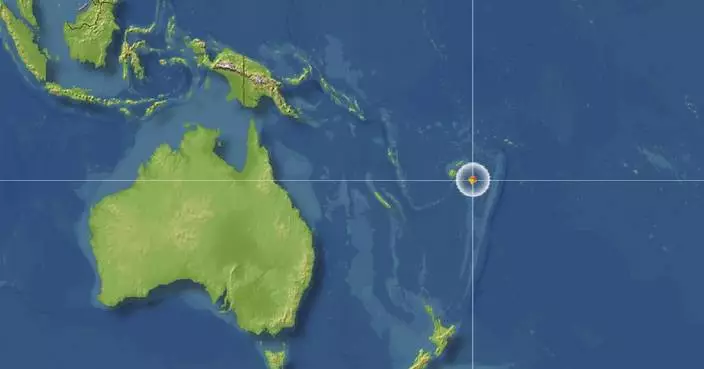A powerful cold front persisted in battering north China on Saturday, unleashing gale-force winds across the northern regions and bringing heavy rain and snow to the northeast.
On Friday, the National Meteorological Center (NMC) issued five alerts for gales, sandstorms, torrential rains, blizzards, and severe convective weather. On Saturday, it renewed orange alerts for gales and blizzards, along with blue alerts for sandstorms and severe convective weather.
The NMC issued a yellow alert for blizzards as heavy snowfall continues to affect parts of Inner Mongolia Autonomous Region and northeastern regions over the weekend.
Areas in Inner Mongolia and the three northeastern provinces of Liaoning, Jilin, and Heilongjiang are expected to experience heavy snowfall and blizzards, with some parts of eastern Inner Mongolia and southeastern Jilin likely to see severe blizzards.
"The combined effect of blizzards and cold waves continues to impact agricultural production to some extent, necessitating the reinforcement of vegetable greenhouses and livestock sheds to prevent collapses. The arrival and departure of spring cold air are both swift. Beginning on April 13, temperatures in western Inner Mongolia will begin to rise, with a rapid temperature increase across most of the region on April 14," said Zhang Guilian, chief forecaster at the Inner Mongolia Autonomous Region Meteorological Observatory.
In addition, the cold front in several regions across northern and central China on Friday unleashed scale-11 gust on the Beaufort scale, which means the wind travels between 103 to 117 kilometers per hour. Beaufort scale is an empirical measure that relates wind speed to observed conditions at sea or on land, . The most severely affected areas included Gansu Province and Ningxia Hui Autonomous Region in the northwest, Beijing and Shanxi Province in the north, and Henan Province in central China.
The powerful winds triggered widespread sandy or dusty weather across northwestern and northern China, as well as in parts of the Huanghuai region. Sandstorms battered areas in the autonomous regions of Xinjiang, Inner Mongolia, and Ningxia, as well as in the provinces of Gansu, Shaanxi, Shanxi, and Hebei.
On Saturday, the NMC renewed an orange alert for strong winds and a blue alert for sandstorms.
Throughout the weekend, the cold air will persist in impacting central and eastern China. On Saturday, northern China and the Huanghuai region will encounter stronger winds ranging from scale 6 to 8, or 39 to 74 kilometers per hour, with gusts reaching scale 9 to 11, or 75 to 117 kilometers per hour. In certain areas of Inner Mongolia, Shanxi, Hebei, and Beijing, gusts could intensify to scale 12, or 118 to 149 kilometers per hour.
Meanwhile, on Saturday, the ongoing sandstorm is expanding beyond northern China, reaching the middle and lower reaches of the Yangtze River. Widespread sandy or dusty weather is expected across most of central and eastern China, including parts of Jiangxi, Zhejiang, and Sichuan provinces.

Powerful cold front batters north China with gales, snow






















































